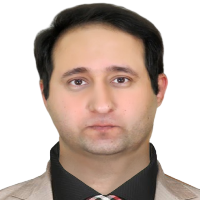Presentation of "integrated teaching reference model" in architecture and urbanization based on curriculum on macro to micro level of education
Due to the globalization trend, countries are increasingly engaging in the context of a new problem in the study of curriculum as a way to complete tomorrow's education with the knowledge, skills and capabilities required. The similarity, as well as the differentiation of curriculum reform between different countries, reflects broader complexity about curriculum reform process, which relates to the interplay of global, indigenous influences and their educational impacts. Because the importance of the role of a specific educational program on the efficiency of students' graduation results has been recognized by educational planners. In this regard, the importance of curriculum reform implementation is discussed from the viewpoint of administrators of education. This is why the question of how to reform the curriculum policy becomes a reality in the sector and layers of higher education, has become the focus of higher education administrators. Teaching reference based on the nature of architecture and urbanization is a theoretical and multifaceted concept that can be paid in different aspects. The present framework has attempted to select the most comprehensive platform that, in reality, has played the most role in shaping this nature, the namely “educational program” or “curriculum”. The educational program is a multi-scale and multistandard concept that includes a wide range of headquarters planning at the level of the Ministry, to micro-level planning in the management of architecture and urban planning departments of faculties. Accordingly, the present theory-making research has been formed with the aim of presenting a framework that is consistent with and proportional to the "importance, relevance and application" of various educational-research factors in architecture and urbanism.The solution of this research is to provide a suitable answer to this type of complexity arising from the spread of effective factors and implementation areas, using the problem solving method and strategies for breaking the macro problem, into the micro problems separated from each other. The necessity of such a thing is to promote the education- based generation (the first academic generation) to the research- based generation (the second academic generation). The application of such a reference contributes to an integrated understanding and management of the goals and capabilities of architecture and urbanism in the "socio-artistic-economic" levels. The present study, by means of grounded theory and qualitative approach, and by examining the ideas and frameworks of thought in the higher education system, has added some cases to the realization of and compatible with the research objectives in accordance with upstream laws, as well as sections. The findings of this theory can be defined and be referred to as the “teaching pattern” by summing up different levels of content and methods of the lessons for each pedagogical goal, that have considered a framework corresponding to their nature. The use of appropriate teaching patterns can play a significant role in reducing education disability, inefficiencies and will pave the way for increasing the satisfaction of those involved in education. It also, in the long run, it will also enhance coordination between the university education and the needs of the professional community. IN such a way as to promise the formation of a healthy competition environment among higher education institutions in the field of quality improvement, specialized orientation and recruitment of skilled personnel for the implementation of educational planning.
-
A Study Of Realistic Data-Based Architecture
*,
Raf Quarterly Scientific Journal of Architecture, Restoration and Urbanism, -
Recognizing the "cultural stability" arising from the "civilizational hegemony" of Elam, in ancient Iranian governments
*, Toktam Hanaie
Journal of Archeology of Iran, -
Evolution of Theoretical Foundations of Contemporary Architecture and Urban Planning; Transition From the Discourse of Impressionability to Influence
*, , Toktam Hanaee
Journal of Interdisciplinary Studies in Iranian Architecture,



